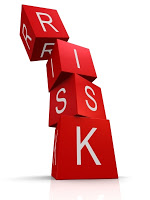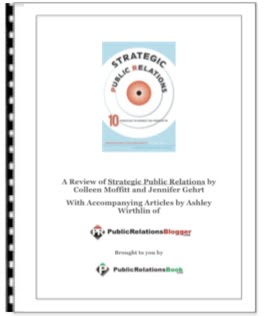________________________________________________________________________
 Crisis management is the process by which an organization deals with any major unpredictable event that threatens to harm the organization, its stakeholders, or the general public. Three elements are common to most definitions of crisis: (a) a threat to the organization, (b) the element of surprise, and (c) a short decision time.
Crisis management is the process by which an organization deals with any major unpredictable event that threatens to harm the organization, its stakeholders, or the general public. Three elements are common to most definitions of crisis: (a) a threat to the organization, (b) the element of surprise, and (c) a short decision time.
Whereas risk management involves assessing potential threats and finding the best ways to avoid those threats, crisis management involves dealing with the disasters after they have occurred. It is a discipline within the broader context of management consisting of skills and techniques required to assess, understand, and cope with any serious situation, especially from the moment it first occurs to the point that recovery procedures start.
The credibility and reputation of organizations is heavily influenced by the percpetion of their responses during crisis situations. The organization and communication involved in responding to a crisis in a timely fashion makes for a challenge in businesses. There must be open and consistent communication throughout the hierarchy to contribute to a successful crisis communication process.
The related terms emergency management and business continuity management focus respectively on the prompt but short lived "first aid" type of response (e.g. putting the fire out) and the longer term recovery and restoration phases (e.g. moving operations to another site). Crisis is also a facet of risk management, although it is probably untrue to say that Crisis Management represents a failure of Risk Management since it will never be possible to totally mitigate the chances of catastrophes occurring.
Natural crises, typically natural disasters considered as'acts of God,' are such environmental phenomena as earthquakes, volcanic eruptions, tornadoes and hurricanes, floods, landslides, tidal waves, storms, and droughts that threaten life, property, and the environment itself.
Example: 2004 Indian Ocean earthquake (Tsunami)
Examples: Chernobyl disaster, Exxon Valdez oil spill
Example: Rainbow/PUSH’s (People United to Serve Humanity) boycott of Nike
Example: 1982 Chicago Tylenol murders
Crises of skewed management values
Crises of skewed management values are caused when managers favor short-term economic gain and neglect broader social values and stakeholders other than investors. This state of lopsided values is rooted in the classical business creed that focuses on the interests of stockholders and tends to view the interests of its other stakeholders such as customers, employees, and the community.
Example: Sears sacrifices customer trust[clarification needed]
Example: Procter & Gamble's Logo controversy
|

Crisis Management | A Brief Overview
________________________________________
 Crisis management is the process by which an organization deals with any major unpredictable event that threatens to harm the organization, its stakeholders, or the general public. Three elements are common to most definitions of crisis: (a) a threat to the organization, (b) the element of surprise, and (c) a short decision time.
Crisis management is the process by which an organization deals with any major unpredictable event that threatens to harm the organization, its stakeholders, or the general public. Three elements are common to most definitions of crisis: (a) a threat to the organization, (b) the element of surprise, and (c) a short decision time.Whereas risk management involves assessing potential threats and finding the best ways to avoid those threats, crisis management involves dealing with the disasters after they have occurred. It is a discipline within the broader context of management consisting of skills and techniques required to assess, understand, and cope with any serious situation, especially from the moment it first occurs to the point that recovery procedures start.
Introduction
Crisis management consists of:
Crisis management consists of:
- Methods used to respond to both the reality and perception of crises.
- Establishing metrics to define what scenarios constitute a crisis and should consequently trigger the necessary response mechanisms.
- Communication that occurs within the response phase of emergency management scenarios.
Crisis management is occasionally referred to as incident management, although several industry specialists such as Peter Power argue that the term crisis management is more accurate.
The credibility and reputation of organizations is heavily influenced by the percpetion of their responses during crisis situations. The organization and communication involved in responding to a crisis in a timely fashion makes for a challenge in businesses. There must be open and consistent communication throughout the hierarchy to contribute to a successful crisis communication process.
The related terms emergency management and business continuity management focus respectively on the prompt but short lived "first aid" type of response (e.g. putting the fire out) and the longer term recovery and restoration phases (e.g. moving operations to another site). Crisis is also a facet of risk management, although it is probably untrue to say that Crisis Management represents a failure of Risk Management since it will never be possible to totally mitigate the chances of catastrophes occurring.
Types of Crisis
During the crisis management process, it is important to identify types of crises in that different crises necessitate the use of different crisis management strategies. Potential crises are enormous, but crises can be clustered.
During the crisis management process, it is important to identify types of crises in that different crises necessitate the use of different crisis management strategies. Potential crises are enormous, but crises can be clustered.
Coombs identified nine types of crises
- Natural disasters
- Malevolence
- Technical breakdowns
- Human breakdowns
- Challenges
- Megadamage
- Organizational misdeeds
- Workplace violence
- Rumors
- Natural disaster
- Technological crises
- Confrontation
- Malevolence
- Crises of skewed management value
- Crises of deception
- Crises of management misconduct
Natural crises, typically natural disasters considered as'acts of God,' are such environmental phenomena as earthquakes, volcanic eruptions, tornadoes and hurricanes, floods, landslides, tidal waves, storms, and droughts that threaten life, property, and the environment itself.
Example: 2004 Indian Ocean earthquake (Tsunami)
Technological crises
Technological crises are caused by human application of science and technology. Technological accidents inevitably occur when technology becomes complex and coupled and something goes wrong in the system as a whole (Technological breakdowns). Some technological crises occur when human error causes disruptions (Human breakdowns). People tend to assign blame for a technological disaster because technology is subject to human manipulation whereas they do not hold anyone responsible for natural disaster. When an accident creates significant environmental damage, the crisis is categorized as megadamage. Samples include software failures, industrial accidents, and oil spills.
Technological crises are caused by human application of science and technology. Technological accidents inevitably occur when technology becomes complex and coupled and something goes wrong in the system as a whole (Technological breakdowns). Some technological crises occur when human error causes disruptions (Human breakdowns). People tend to assign blame for a technological disaster because technology is subject to human manipulation whereas they do not hold anyone responsible for natural disaster. When an accident creates significant environmental damage, the crisis is categorized as megadamage. Samples include software failures, industrial accidents, and oil spills.
Examples: Chernobyl disaster, Exxon Valdez oil spill
Confrontation crises
Confrontation crises occur when discontented individuals and/or groups fight businesses, government, and various interest groups to win acceptance of their demands and expectations. The common type of confrontation crises is boycotts, and other types are picketing, sit-ins, ultimatums to those in authority, blockade or occupation of buildings, and resisting or disobeying police.
Confrontation crises occur when discontented individuals and/or groups fight businesses, government, and various interest groups to win acceptance of their demands and expectations. The common type of confrontation crises is boycotts, and other types are picketing, sit-ins, ultimatums to those in authority, blockade or occupation of buildings, and resisting or disobeying police.
Example: Rainbow/PUSH’s (People United to Serve Humanity) boycott of Nike
Crises of malevolence
An organization faces a crisis of malevolence when opponents or miscreant individuals use criminal means or other extreme tactics for the purpose of expressing hostility or anger toward, or seeking gain from, a company, country, or economic system, perhaps with the aim of destabilizing or destroying it. Sample crises include product tampering, kidnapping, malicious rumors, terrorism, and espionage.
An organization faces a crisis of malevolence when opponents or miscreant individuals use criminal means or other extreme tactics for the purpose of expressing hostility or anger toward, or seeking gain from, a company, country, or economic system, perhaps with the aim of destabilizing or destroying it. Sample crises include product tampering, kidnapping, malicious rumors, terrorism, and espionage.
Example: 1982 Chicago Tylenol murders
Crises of organizational misdeeds
Crises occur when management takes actions it knows will harm or place stakeholders at risk for harm without adequate precautions. Lerbinger specified three different types of crises of organizational misdeeds: crises of skewed management values, crises of deception, and crises of management misconduct.
Crises occur when management takes actions it knows will harm or place stakeholders at risk for harm without adequate precautions. Lerbinger specified three different types of crises of organizational misdeeds: crises of skewed management values, crises of deception, and crises of management misconduct.
Crises of skewed management values
Crises of skewed management values are caused when managers favor short-term economic gain and neglect broader social values and stakeholders other than investors. This state of lopsided values is rooted in the classical business creed that focuses on the interests of stockholders and tends to view the interests of its other stakeholders such as customers, employees, and the community.
Example: Sears sacrifices customer trust[clarification needed]
Crises of deception
Crises of deception occur when management conceals or misrepresents information about itself and its products in its dealing with consumers and others.
Crises of deception occur when management conceals or misrepresents information about itself and its products in its dealing with consumers and others.
Example: Dow Corning’s silicone-gel breast implant
Crises of management misconduct
Some crises are caused not only by skewed values and deception but deliberate amorality and illegality.
Some crises are caused not only by skewed values and deception but deliberate amorality and illegality.
Example: Martha Stewart fraud case
Workplace violence
Crises occur when an employee or former employee commits violence against other employees on organizational grounds.
Crises occur when an employee or former employee commits violence against other employees on organizational grounds.
Example: DuPont’s Lycra[clarification needed]
Rumors
False information about an organization or its products creates crises hurting the organization’s reputation. Sample is linking the organization to radical groups or stories that their products are contaminated.
False information about an organization or its products creates crises hurting the organization’s reputation. Sample is linking the organization to radical groups or stories that their products are contaminated.
Example: Procter & Gamble's Logo controversy
Article Source.
Popular choices
|
| What did you think? |
Filed Under:
Crisis Management,
Crisis Management Overview,
What is Crisis Management
Subscribe to:
Post Comments (Atom)






Comments (0)
Post a Comment